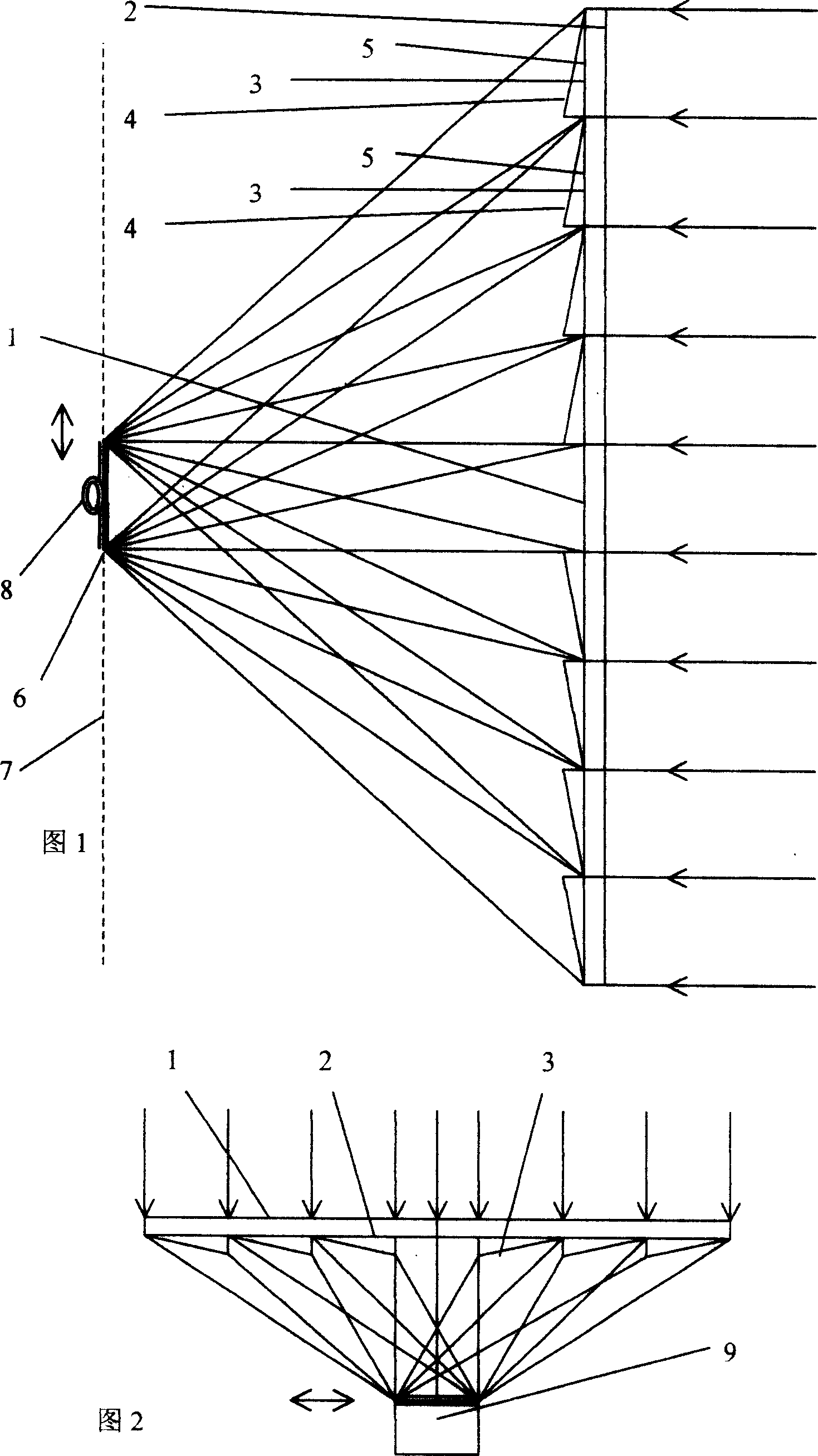A solar device with parallel refraction lens
A solar device and refraction lens technology, which is applied to lenses, optics, photovoltaic modules, etc., can solve problems such as deterioration of working conditions and uneven light intensity on the surface of batteries, and achieve the effects of improving working conditions, simplifying tracking, and improving working conditions
- Summary
- Abstract
- Description
- Claims
- Application Information
AI Technical Summary
Problems solved by technology
Method used
Image
Examples
Embodiment Construction
[0009] Figure 1 shows an embodiment of the present invention, a solar device with a one-dimensional parallel refractive lens. In the figure, a one-dimensional parallel dioptric lens 1 is composed of a plurality of refraction lens optics 3 arranged in a zigzag shape with flat refraction surfaces arranged on a glass plate 2 . Refractive lens optics 3 have two non-parallel planes—oblique refraction surface 4 and flat refraction surface 5 . Because it has two plane refraction surfaces, it is different from the situation that the common focusing convex lens has a focus. In the figure, the light emitted from the refraction lens 1 has refraction but no focus, and its projection area on the photocell 6 is still a light band. . The included angles between the two refraction surfaces of the adjacent refraction lens optics 3 are different, so that the projection areas of the refracted light of all the refraction lens optics 3 on the converging plane 7 can be accurately overlapped and ov...
PUM
 Login to View More
Login to View More Abstract
Description
Claims
Application Information
 Login to View More
Login to View More - R&D
- Intellectual Property
- Life Sciences
- Materials
- Tech Scout
- Unparalleled Data Quality
- Higher Quality Content
- 60% Fewer Hallucinations
Browse by: Latest US Patents, China's latest patents, Technical Efficacy Thesaurus, Application Domain, Technology Topic, Popular Technical Reports.
© 2025 PatSnap. All rights reserved.Legal|Privacy policy|Modern Slavery Act Transparency Statement|Sitemap|About US| Contact US: help@patsnap.com

